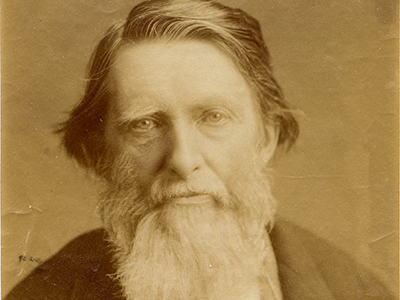
2013 - Ruskin among the giants
The Mikimoto Memorial Ruskin Lecture of 2013 was held on 14 November in Lancaster University's Cavendish Lecture Theatre.
Speaker: Professor John Batchelor (Newcastle University)
Title: 'Ruskin among the giants'
John Ruskin (1819-1900) had a life span just slightly shorter than that of Queen Victoria. He and she were the two giants who spanned the whole of his age, and some of his most productive and fruitful interactions and disagreements were with the artists and writers who guided the central Victorian cultural energies, including Carlyle, Rossetti, Millais, Holman Hunt, Tennyson, Browning, Matthew Arnold, John Stuart Mill, Burne-Jones and G.F. Watts.
Ruskin's earliest modelling was from men who were older and in his eyes stronger, starting with his own father, John James. His dependent relationship with his father helped to shape his feelings about his first heroes: Wordsworth, Turner and, in a different way, Carlyle, who as a personal friend powerfully influenced the young Ruskin. Later, as a major critic, Ruskin became a father figure himself to the young Pre-Raphaelites, although his interaction with Millais was famously troubled and resulted in the end of Ruskin's disastrous marriage with Effie Gray. The great artists of the past whom he discovered as he worked on the successive volumes of Modern Painters became further giants in his landscape, though not consistently; Michelangelo became a contentious figure in his later thinking, while Veronese and Tintoretto caused him to reconsider his earlier resistance to the Renaissance as whole. As Ruskin’s enthusiasms and crusades expanded in their range after the 1870s, his position among the giants became affected by his own emotional storms, to a point where he had difficulty separating his thoughts from his relationships and circumstances.
2013 - Ruskin among the giants
